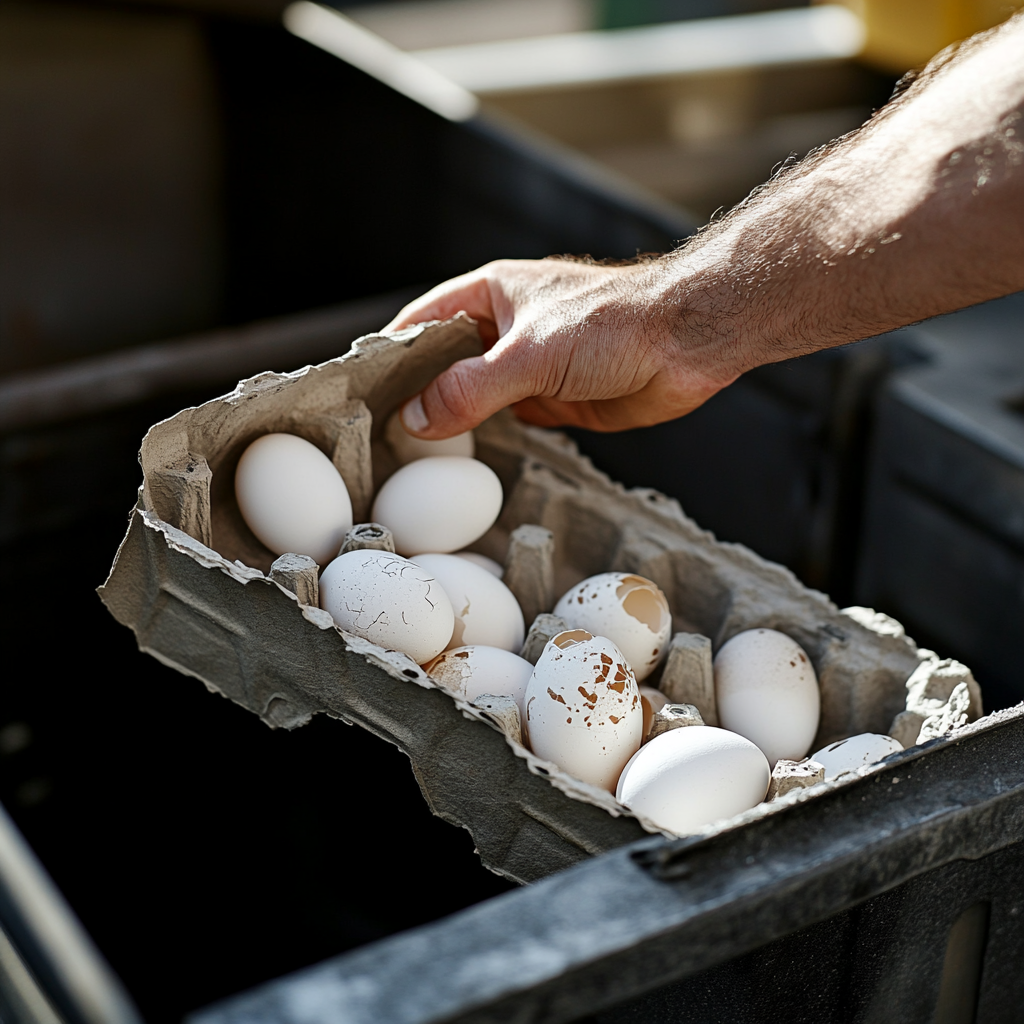The Food and Drug Administration (FDA) has just escalated an egg recall to its highest level of urgency, warning of potential “serious health consequences” that could impact breakfast tables across America. The recall’s scope has expanded dramatically, affecting hundreds of thousands of egg cartons. What’s really going on with this recall, and how concerned should you be about your morning meal? Let’s examine the facts behind this egg-centric crisis and what it means for your kitchen.
The recall covers more eggs than you might think

When the FDA first announced the recall, it affected about 108,000 cartons of eggs. But like a snowball rolling downhill, the scope has expanded to more than 345,000 cartons. That’s a lot of potential breakfast hazards! The recall isn’t limited to a single brand either. It includes all eggs supplied by Milo’s Poultry Farms, including those sold under the Tony’s Fresh Market brand, Happy Quackers Farm, and M&E Family Farms.
But here’s the kicker: these eggs were distributed across Wisconsin, Illinois, and Michigan. So, if you’re in one of these states, it’s time to take a hard look at your egg carton. Check the label carefully – if it’s from any of these brands, it’s better to be safe than sorry.
Remember, this recall covers all types of eggs – conventional, cage-free, organic, and even duck eggs. It’s not just about the chicken crossing the road anymore; it’s about every egg that’s left the farm.
The FDA isn’t yolking around with this Class I recall
When the FDA classifies a recall as Class I, it’s not just crying wolf. This designation means there’s a reasonable probability that consuming the product will cause serious adverse health consequences or death. In other words, these eggs could be playing Russian roulette with your health.
The culprit behind this eggsistential crisis? Salmonella Enteritidis. This nasty little bacterium was found lurking in samples from Milo’s Poultry Farm’s packing facility and poultry house. And it’s not just any strain – it’s the same one causing illnesses in the ongoing outbreak.
But what if you’ve already eaten some of these eggs? Don’t panic just yet. While the risk is serious, not everyone who consumes contaminated eggs will get sick. However, it’s crucial to be vigilant about any symptoms that might crack through.
Salmonella symptoms aren’t always over easy to spot

Salmonella infection can be a real pain in the gut – literally. The symptoms typically show up 12 to 72 hours after eating contaminated food. You might experience fever, diarrhea (which can be bloody – yikes!), nausea, vomiting, and abdominal cramps. It’s like a gastrointestinal greatest hits album, but not one you’d ever want to listen to.
For most healthy adults, these symptoms usually last about 4 to 7 days. But here’s where it gets tricky: for some people, Salmonella can be much more than just an unpleasant week. Children under 5, the elderly, and those with weakened immune systems are at higher risk of severe infections.
In rare cases, the infection can even enter the bloodstream, leading to more serious conditions like arterial infections, endocarditis, and arthritis. It’s like Salmonella decides to go on a tour of your body, and trust me, you don’t want to buy tickets to that show.
The outbreak numbers are no small fry
Let’s talk numbers, and I promise, this isn’t just chicken scratch. As of October 17, 2024, this outbreak has caused 93 reported illnesses across 12 states. Of those, 34 people have been hospitalized. That’s a lot of people feeling pretty rotten, all because of some contaminated eggs.
But here’s a silver lining – so far, there have been no reported deaths. It’s a small comfort, but an important one. It shows that while this outbreak is serious, it’s not invincible. With proper awareness and precautions, we can keep that death count at zero.
Interestingly, the majority of cases – 41 to be exact – have been reported in Wisconsin. It’s like the Salmonella decided to set up shop in America’s Dairyland. But remember, just because you’re not in Wisconsin doesn’t mean you’re in the clear.
What to do if you’ve got recalled eggs in your fridge

So, you’ve checked your fridge and found some of the recalled eggs. Now what? First things first – don’t panic. Second, don’t eat those eggs. I know it’s tempting to think, “I’ll just cook them really well,” but that’s a gamble you don’t want to take.
The FDA advises throwing out the recalled eggs. But don’t just toss them in the trash and call it a day. You need to clean and sanitize any surfaces or containers that might have touched the eggs. Think refrigerator shelves, egg cartons, and even that cute egg holder on your counter.
For the extra cautious (or those who’ve watched one too many crime scene investigation shows), you might want to use a diluted bleach solution for sanitizing. Just remember, we’re trying to kill Salmonella, not your sense of smell.
The long arm of the FDA’s investigation
The FDA isn’t just sitting on its hands while this outbreak unfolds. They’ve been working with the CDC and state and local partners to investigate this outbreak. It’s like a CSI episode, but instead of solving murders, they’re tracking down rogue bacteria.
Their investigation found that the Salmonella Enteritidis strain in Milo’s Poultry Farm’s facility matched the one causing illnesses in the outbreak. It’s like finding a fingerprint at a crime scene – pretty damning evidence.
In response, Milo’s Poultry Farms has ceased production and distribution. They’ll need to undergo appropriate testing and sanitization before they can start slinging eggs again. It’s a bit like being sent to the principal’s office, but with more bleach and fewer stern lectures.
This isn’t the first rodeo for egg recalls
While this recall is making headlines, it’s not the first time eggs have been in the hot seat. Salmonella in eggs is a recurring issue that the food industry and regulators have been grappling with for years. It’s like a game of whack-a-mole, but with potentially life-threatening consequences.
In fact, the FDA has implemented various measures over the years to reduce the risk of Salmonella in eggs, including the Egg Safety Rule in 2009. This rule requires egg producers to take preventive measures to keep Salmonella out of their facilities. Clearly, there’s still work to be done.
But what if we lived in a world where every egg came with its own little hazmat suit? Or maybe we could train chickens to be Salmonella-sniffing detectives? While these ideas might be a bit far-fetched, they do highlight the ongoing challenge of keeping our food supply safe.


